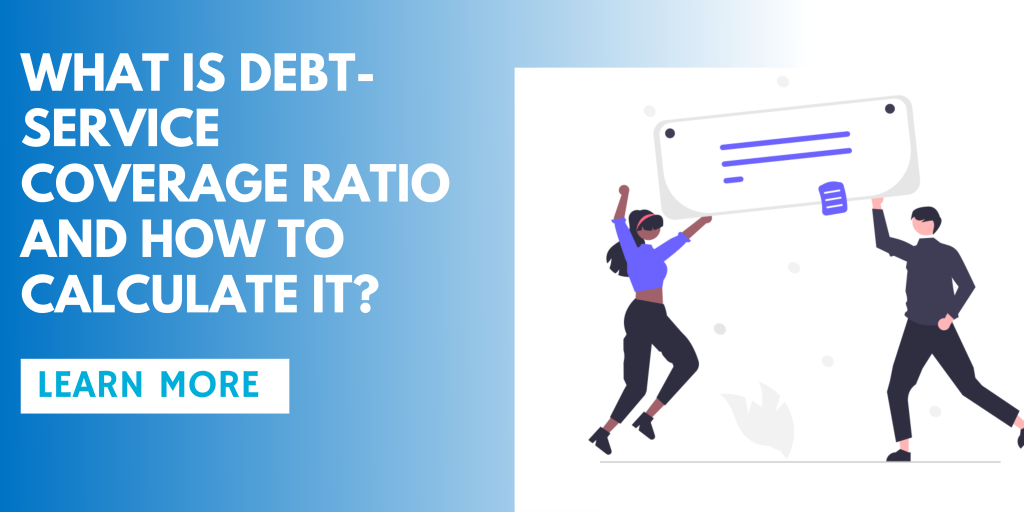Are you a small business owner trying to get your head around all the different coverage ratios? You’re not alone. Many business owners feel overwhelmed when they first learn about these ratios.
In this blog post, we will provide a beginner’s guide to understanding all the different types of coverage ratios. Then, we’ll explain what each ratio means and how it can be used to help your business.
Meeting A Financial Obligation: What Does It Mean?
Before we delve into coverage ratios, let’s examine what it means to meet a financial obligation. In business, when you’re expected to pay back debts or make other payments on time, meeting your obligations is referred to as ‘financial leverage’.
Leverage means that you are using borrowed funds to help finance operations and investments, but those borrowed funds still need to be repaid. So when it comes to the coverage ratio, you are looking at how well your business can meet its financial obligations. The higher the percentage, the better your business meets its debts and liabilities.
What Is A Coverage Ratio?
A coverage ratio measures your business’s ability to meet its financial obligations. It is calculated by taking the total operating income, announced or otherwise, divided by the sum of all current liabilities and long-term debt.
When it comes to business, one of the most important concepts is understanding coverage ratios. Knowing how to calculate and interpret these can help you make better decisions in terms of both your business operations and financial planning.
This beginner’s guide to understanding all the coverage ratios will give you a comprehensive overview of what they are, how they work, and how you can use them in your business.
The Different Types Of Coverage Ratios And Their Relevance To The Business
You should be aware of several different types of coverage ratios. These include:
Debt Service Coverage Ratio (DSCR)
DSCR is a crucial metric for evaluating the financial health of a business. It indicates the entity’s ability to repay its debt obligations utilizing current income without preferring one creditor over another or compromising its bottom line.
The DSCR is an important measurement that offers lenders insight into the company’s present and future debt-servicing capacity; it acts as a metric to compare entities against industry peers and evaluate their creditworthiness when deciding whether to extend credit or lend funds.

Interest Coverage Ratio (ICR)
The Interest Coverage Ratios, or ICR, is a financial metric that measures the ability of a company to pay its annual interest expenses out of its earnings before taxes. It is an essential tool for analysts when assessing companies’ financial strength and ability to meet financial obligations such as loan interest payments over time.
ICR should be carefully monitored as it can indicate imminent default if not appropriately managed. By regularly assessing a firm’s ICR, management teams can increase transparency with lenders and evaluate the risk associated with lending money to the business.
Companies with intense ICR levels should consider leveraging this strength through new borrowing capabilities to take advantage of beneficial investments with potentially high returns. In summary, Interest Coverage Ratio is critical in understanding and managing a company’s liquidity position.
Equity Coverage Ratio (ECR)
The equity coverage ratio is essential for businesses to measure their financial stability. Essentially, the equity coverage ratio evaluates the business’s ability to service its debt obligations and maintain solvency.
This calculation divides a business’s assets by its total liabilities, including long and short-term debt. When this ratio exceeds 1, the business has sufficient funds to fulfill its obligations.
A coverage ratio below one signals distress as the company will not have enough assets to repay what it owes fully. On the other hand, a positive equity coverage ratio is incredibly important; creditors won’t loan unless they believe their money will be returned.
Lenders will withdraw support if a company displays financial instability, as indicated by a declining coverage ratio. Tracking and evaluating the equity coverage ratio can help businesses understand where they stand financially and avoid dangerous decisions that can lead to distress or insolvency.
Asset Coverage Ratio (ACR)
Asset Coverage Ratios are commonly used to measure a company’s ability to pay. Coverage Ratios represent the amount of debt that can be serviceable by a company’s assets and gauge their ability to satisfy creditors’ demands.
Coverage Ratios can alert potential investors or creditors to any areas of potential risk by displaying whether an entity has enough liquid assets to cover its debts; should a business fall short, these Coverage Ratios can help determine the remedial measures necessary. The more Coverage Ratio calculations one has, the better one understands the relationship between debts and available resources.
Liquidity Coverage Ratio (LCR)
The Liquidity Coverage Ratio (LCR) is an essential tool for businesses of all sizes. Establishing and maintaining a healthy LCR helps to ensure that a business can survive unexpected periods of liquidity stress, such as a recession or other market disruptions.
The Coverage Ratio measures the number of liquid assets held compared to its short-term liabilities. It offers insight into the business’s ability to cover any short-term debt should there be an interruption in its access to credit markets.
Cash Coverage Ratio
A cash coverage ratio is essential for businesses of all sizes, as it measures a company’s ability to meet short-term debt obligations. To calculate the liquidity ratio, divide cash and investments that can be quickly converted to currency by the company’s current liabilities.
It measures a company’s ability to meet its short-term obligations. A higher cash coverage ratio indicates that a business can pay off its current debts with less financial stress or without borrowing.
Common Coverage Ratios
Coverage ratios are financial metrics used to measure the ability of a business to meet its financial obligations. Some of the most common coverage ratios include debt service coverage ratio (DSCR), interest coverage ratio (ICR), principal & interest coverage ratio (P&I Ratio), and asset coverage ratio (ACR).
Businesses can use these ratios to quickly identify and benchmark their current position, allowing them to identify inefficiencies and make timely decisions.
Fixed Charge Coverage Ratio
The fixed charge coverage ratio is essential to business stability and cost-effectiveness. It measures a company’s ability to cover its bills due in fixed payments – such as interest on debt, operating leases, and other costs like insurance premiums or rentals – while still having enough left over to pay back the principal amount of any borrowed money.
Both lenders and investors use this ratio to determine the availability of funding, managed risk levels, debt servicing capability, and financial soundness of a business. It portrays a clear picture of the company’s performance compared to its peers, which can reflect how well they manage its finances.
Conclusion
As a small business owner, understanding coverage ratios can help you make more informed decisions about your business operations and financial planning. Coverage ratios measure the ability of a business to meet its financial obligations and help gauge the level of risk associated with its operations or investments.
By understanding these ratios and how they work, you can make better decisions in terms of both your business operations and financial planning. Coverage ratios are essential for all businesses, and understanding these ratios can help you make better business decisions.
FAQs
What is the minimum acceptable ratio?
The minimum acceptable Coverage Ratio varies depending on the type of Coverage Ratio used. However, generally speaking, Coverage Ratios should be maintained within recommended ranges to ensure that a business is protected from unexpected liquidity challenges.
Is annual interest expense present in the coverage ratio?
Yes, Coverage Ratios typically consider all of a business’s expenses, including annual interest expenses. As a result, it allows Coverage Ratios to assess the company’s financial position and risk level accurately.
Are financial ratios the same for not-for-profit organizations?
No, Coverage Ratios can vary depending on the type of organization. For example, not-for-profit organizations typically have different Coverage Ratios and calculations than for-profit businesses.
It is essential to understand these variations when evaluating a not-for-profit organization’s financial position.



